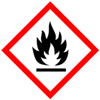| Anmol Chemicals is the pioneer manufacturers of Manzanate, Pharmaceutical Excipients Fragrance Food & Flavor chemicals in India. We offer Halal and Kosher Manzanate made in an ISO9001, ISO22000 (FSSC22000) cGMP and GLP certified facility. Our group has several manufacturing facilities spread across the world, supported by toll manufacturers and representatives in UAE, Europe, Africa, USA, China and has several associated manufacturing facilities spread across India. All the Information on Physics, Chemistry, Applications, Uses and Technology on Manufacture of Manzanate is in these pages. |
| The units have one or more of the certifications like FDA GMP, ISO 9001, ISO 22000, HACCP, REACH, Kosher & Halal |
Manzanate, Ethyl 2 Methyl Pentanoate, Ethyl 2 Methyl Valerate Manufacturers
Italian Produttori di manzanato, etile 2 metil pentanoato
German Manzanate, Ethyl 2 Methyl Pentanoate Hersteller
Arabic Manzanate ، مصنعي Ethyl 2 Methyl Pentanoate
French Fabricants de manzanate, d'éthyl 2 méthyl pentanoate
Dutch Fabrikanten van manzanaat, ethyl-2-methylpentanoaat
Portuguese Manzanato, fabricantes de etil 2 metil pentanoato
Spanish Fabricantes de manzanato, etil 2 metil pentanoato
MSDS of Manzanate or Ethyl 2 Methyl Pentanoate or Ethyl 2 Methyl Valerate Manufacturers
Manzanate SDS GHS, MSDS Sheet, Material Safety Data Sheet
1. Product Identification
Synonyms: MANZANATE, ETHYL 2-METHYL PENTANOATE, ETHYL 2-METHYLPENTANOATE, Ethyl-2-methyl valerate, Ethyl alpha methylvalerate 2-methyl-pentanoic acid ethyl ester
CAS No.: 39255-32-8
EINECS EC No.: 254-384-1
Molecular Formula: C8H16O2
Molecular Weight: 144.21
FEMA: 3488
2. Hazards Identification
GHS, Globally Harmonized System Classification in accordance with 29 CFR 1910
Classification according to Regulation (EC) No 1272/2008
Flammable liquids (Category 3), H226
Labeling according Regulation (EC) No 1272/2008
GHS Label Elements  Flammable |
Signal Words: Warning
Hazard statements:
H226: Flammable liquid and vapour.
Hazards not otherwise classified (HNOC):
May causes mild skin irritation.
May causes mild eye irritation.
Precautionary statements:
P210: Keep away from heat/sparks/open flames/hot surfaces. — No smoking.
P240: Ground/bond container and receiving equipment.
P242: Use only non-sparking tools.
P261: Avoid breathing dust/fume/gas/mist/vapors/spray.
P262: Do not get in eyes, on skin, or on clothing.
P281: Use personal protective equipment as required.
P370+P378: In case of fire: Use foam or dry powder or water fog for extinction.
P403+P235: Store in a well-ventilated place. Keep cool.
P302+P352 - IF ON SKIN: Wash with plenty of soap and water.
P303+P361+P353 - IF ON SKIN (or hair): Remove/Take off immediately all contaminated clothing. Rinse skin with water/shower.
P304 + P340 - IF INHALED: Remove victim to fresh air and keep at rest in a position comfortable for breathing.
P305 + P351 + P338 - IF IN EYES: Rinse cautiously with water for several minutes. Remove contact lenses, if present and easy to do. Continue rinsing.
P337+313: If eye irritation persists get medical advice/attention.
Classification according to EU Directives 67/548/EEC or 1999/45/EC:
R10 F
For the full text of the H-statements & R-phrases mentioned in this Section, see Section 16.
HMIS (Perceived) :
Health hazard: 0,
Flammability: 1,
Reactivity: 0
Personal Protection: E
NFPA (Perceived):
Health hazard: 1,
Fire: 2,
Reactivity Hazard: 0,
Protective Equip: Goggles, Lab Coat.
3. Composition/Information on Ingredients
Ingredient: Manzanate
CAS No.: 39255-32-8
EINECS EC No.: 254-384-1
Percent: 97 - 100%
4. First Aid Measures
Always seek medical attention after first aid measures are provided.
Inhalation: Remove to fresh air. If not breathing, give artificial respiration. If breathing is difficult, give oxygen. Get medical attention.
Ingestion: Never give anything by mouth to an unconscious person. Get medical attention.
Skin Contact: Wipe off excess material from skin then immediately flush skin with plenty of water for at least 15 minutes. Remove contaminated clothing and shoes.
Get medical attention. Wash clothing before reuse. Thoroughly clean shoes before reuse.
Eye Contact: Immediately flush eyes with plenty of water for at least 15 minutes, lifting lower and upper eyelids occasionally. Get medical attention immediately.
5. Fire Fighting Measures
Flammability of the Product: Combustible.
Auto-Ignition Temperature: NA.
Flash Points: 39 deg C
Flammable Limits: Not available.
Products of Combustion: Carbon dioxide, Carbon monoxide, fumes.
Fire: Inflammable.
Explosion: Explosive in presence of heat.
Fire Extinguishing Media: Use any means suitable for extinguishing surrounding fire. Use water spray,
alcohol-resistant foam, dry chemical or carbon dioxide.
Special Information: In the event of a fire, wear full protective clothing and NIOSH-approved self-contained
breathing apparatus with full face piece operated in the pressure demand or other positive pressure mode. At high temperatures
or when moistened under fire conditions,
it may produce toxic or irritating fumes.
6. Accidental Release Measures
Small Spill: Avoid mist formation. Avoid breathing mist. Ensure adequate ventilation. Use appropriate tools to put the spilled solid in a convenient waste
disposal container. Finish cleaning by spreading water on the contaminated surface and dispose of according to local and regional authority requirements.
Large Spill: Remove all sources of ignition. Provide proper ventilation. If liquid - absorb the material on a porous, inert material such as earth, sand or
vermiculite. If solid/powder - carefully sweep up the material without causing dust. Dispose of in accordance with local regulations.
Large liquid spillages should be contained by use of sand or another inert material. The spillage should be transferred to a suitable container and recovered or disposed of in accordance with local regulations. Because of the danger of spontaneous combustion, any combustible material, such as cloth, used for cleaning spillages, should be saturated with water and disposed of promptly, preferably by incineration.
7. Handling and Storage
Do not ingest. Do not breathe dust or mist. Wear suitable protective clothing. In case of insufficient ventilation, wear suitable respiratory equipment.
Avoid contact with skin and eyes. Avoid formation of dust and aerosols. Wash hands thoroughly after handling. Provide appropriate exhaust ventilation at places where
dust is formed. If you feel unwell, seek medical attention.
Keep Manzanate in a tightly closed container, stored in a cool, dry, ventilated area. Keep the product in its original container well
sealed, in a dry and ventilated area,
away from potential sources of ignition and protected from light. Protect against physical damage.
8. Exposure Controls/Personal Protection
Airborne Exposure Limits: Not Established.
Ventilation System: A system of local and/or general exhaust is recommended to keep employee exposures as low as possible. Local exhaust ventilation is generally
preferred because it can control the emissions of the contaminant at its source, preventing dispersion of it into the general work area.
Personal Respirators (NIOSH Approved): For conditions of use where exposure to dust or mist is apparent and engineering controls are not feasible, a particulate
respirator may be worn. For emergencies or instances where the exposure levels are not known, use a full-face positive-pressure, air-supplied respirator.
Skin Protection: Wear protective gloves and clean body-covering clothing.
Eye Protection: Use chemical safety goggles and/or full face shield where dusting or splashing of solutions is possible. Maintain eye wash fountain and
quick-drench facilities in work area.
Other Control Measures: Maintain good housekeeping in work area. Handle in accordance with good industrial hygiene and safety practice. Wash hands after handling.
9. Physical and Chemical Properties
Appearance: Manzanate is a clear to yellowish liquid.
Odor: It has typical Fresh, Fruity, Green apple, Pineapple odor
Solubility: It is insoluble in water.
pH: NA
Density: 0.865 g/mL at 25C
Molecular Weight: 151.16
Molecular Formula: C8H9NO2
% Volatiles by volume @ 21C (70F): -
Boiling Point: 153°C
Melting Point: NA
Vapor Density (Air=1): No information found.
Vapor Pressure (mm Hg): 1,5mmHg @ 20C.
Evaporation Rate (BuAc=1): No information found.
10. Stability and Reactivity
Stability: Manzanate is stable under ordinary conditions of use and storage.
Hazardous Decomposition Products: It emits Carbon dioxide, Carbon monoxide & Fumes.
Hazardous Polymerization: Will not occur.
Incompatibilities: Strong oxidizing agents.
Conditions to Avoid: Incompatibles, strong alkalis, strong acids, heat & light.
11. Toxicological Information
Harmful if inhaled or swallowed. Irritating to eyes & skin.
Toxicity data
ORAL-RAT LD50 Not Available mg kg-1
PRO-AM LD50 Not Available mg kg-1
Carcinogenic Effects: Not a reported carcinogen by IARC, NTP, ACGIH, OSHA.
There is no proper study on the subject.
12. Ecological Information
Environmental Fate: Not available.
Environmental Toxicity: Not known. Toxicity to fish is expected.
BOD5 and COD: Not available. The product is expected to have high BOD.
Products of Biodegradation: Possibly hazardous short term degradation products are not likely.
Toxicity of the Products of Biodegradation: NA.
13. Disposal Considerations
Whatever cannot be saved for recovery or recycling should be managed in an appropriate and approved waste disposal facility. Processing, use or contamination of this product may change the waste management options. State and local disposal regulations may differ from federal disposal regulations. Dispose of container and unused contents in accordance with federal, state and local requirements.
14. Transport Information
US DOT Classification:
Not Regulated
Canada TDG Classification:
Not regulated
IATA
UN-Number: UN 1993 (also 3272)?
Shipping Name: Flammable Liquid, N.O.S. (Ethyl-2Methyl Pentanoate)
CLASS 3
Packing group: III
ADR/RID & IMDG:
UN-Number: UN 1993 (also 3272)?
Shipping Name: Flammable Liquid, N.O.S. (Ethyl-2Methyl Pentanoate)
CLASS 3
Packing group: III
15. Regulatory Information
USA regulations:
OSHA:
This product is a "Hazardous Chemical" as defined by the OSHA Hazard Communication Standard, 29 CFR 1910.1200.
TSCA Section 12(b) Export Notification (40 CFR 707, Subpt. D):
Not regulated.
CERCLA Hazardous Substance List (40 CFR 302.4):
Not listed.
SARA 304 Emergency release notification:
Not regulated.
OSHA Specifically Regulated Substances (29 CFR 1910.1001-1050):
Not listed.
SARA 313:
This substance contains no materials subject to the
reporting requirements of SARA TITLE III SECTION 313.
SARA 302 Extremely hazardous substance:
Not listed.
SARA 311/312 Hazardous
chemical: Listed
US. California Controlled Substances. CA Department of Justice (California Health and Safety Code Section 11100):
Not listed.
US. Massachusetts RTK - Substance List:
Not regulated.
US. New Jersey Worker and Community Right-to-Know Act:
Not listed.
US. Pennsylvania Worker and Community Right-to-Know Law:
Not listed.
US. Rhode Island RTK:
Not regulated.
US. California Proposition 65:
This material is not known to contain any chemicals currently listed as carcinogens or reproductive toxins.
16. Other Information
EINECS EC No.: 254-384-1
H226 = Flammable liquid and vapour.
Hazard Category: F: Flammable
Risk Phrase(s): R10: Flammable.
SAFETY PHRASES
S51 Use only in well-ventilated areas.
S60 This material and its container must be disposed of as hazardous waste.
Disclaimer:
**********************************
Our company provides this Manzanate MSDS sheet in good faith but makes no representation as to its comprehensiveness or accuracy. This Manzanate MSDS sheet is
intended only as a guide to the appropriate precautionary handling of the material by a properly trained person using this product. The above information has been
compiled from various sources and has the possibility of discrepancy and being out-dated information. Individuals receiving the information must exercise their independent
judgment and do further search in determining its appropriateness for a particular purpose. In no case shall our company be liable to loss or damages by the product user.
**********************************
Manzanate manufacturers
Ethyl 2 methyl pentanoate or Ethyl 2 methyl valerate manufacturers
Anmol Chemicals
S-8, SARIFA MANSION, 2ND FLANK ROAD, CHINCHBUNDER, MUMBAI 400009, INDIA
TEL: (OFFICE) 91-22-23770100, 23726950, 23774610, 23723564. FAX: 91-22-23728264
e-mail: anmolc@mtnl.net.in

Alpha Beta Gamma methyl ionone -- Benzyl acetate -- Benzyl benzoate -- Benzyl salicylate -- BHA Butylated hydroxyanisole & BHT Butylated hydroxytoluene -- Cinnamaldehyde Cinnamic aldehyde -- Ethyl naphthyl ether or Nerolin bromelia -- Ethyl chloroacetate -- HEDP Hydroxyethylidenediphosphonic acid -- Isatoic anhydride -- Maleic acid -- Manzanate; Ethyl 2 Methyl Pentanoate or Valerate -- Methyl salicylate -- Phenyl ethyl propionate Phenyl ethyl acetate -- Sodium formaldehyde bisulfite -- TBHQ Tert or Tertiary butylhydroquinone -- Dimethyl anthranilate -- Geranyl nitrile -- Styrallyl acetate
Exports to USA, Canada, UAE, Dubai, South Africa, Tanzania, Kenya, Nigeria, Egypt, Uganda, Turkey, Mexico, Brazil, Chile, Argentina, Europe Netherlands, Italy, Spain, Germany, Portugal, France, Malaysia, Indonesia, Thailand, Vietnam, Korea, Japan, etc.
Copyright and Usual Disclaimer is Applicable. 25 January, 2022




